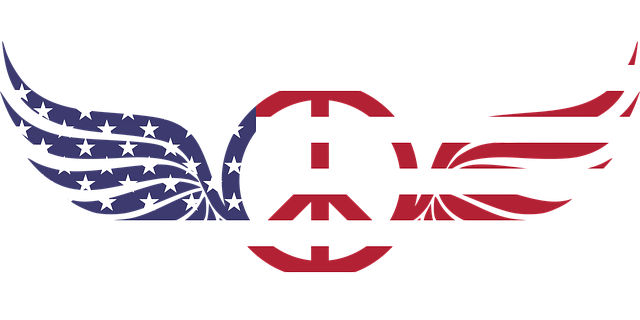The American Eagle and flag are multifaceted national emblems that deeply symbolize America's heritage, values, and identity. The eagle on the Great Seal and currency represents the U.S.'s military readiness and commitment to defending freedom globally, with its olive branch and arrows signifying a balance between peace and defense. It also embodies liberty, justice, and an indomitable spirit that confronts challenges head-on. The flag's iconic red, white, and blue hues recall the 13 original colonies and principles of independence and personal freedom, with its stars symbolizing unity and diversity among all states. Together, these symbols reflect America's sovereignty, strength, ideology, and a blend of values that have defined its place in the world since its founding. Historically significant and subject to artistic interpretation across various forms of expression, from visual art to literature, the eagle and flag resonate with Americans of all backgrounds, capturing the essence of the nation's spirit and serving as powerful icons of unity and national identity.
The enduring images of the American Eagle and flag are more than mere symbols; they encapsulate the essence of U.S. power, a synthesis of ideals and might that has shaped the nation’s identity over centuries. This article delves into their profound significance, exploring how these icons have evolved and been woven into the cultural fabric of the United States. From their historical roots to their presence in art, literature, and public discourse, the American Eagle and flag stand as a testament to national values and sovereignty. Join us as we examine their influence and the impact they have on shaping American perception both domestically and internationally.
- The Symbolism of the American Eagle and Flag in Representing National Power
- Historical Contexts: The Evolution of the American Eagle and Flag as Icons of U.S. Sovereignty
- Cultural Significance: The Eagle and Flag in Art, Literature, and Public Discourse
The Symbolism of the American Eagle and Flag in Representing National Power

The American eagle, emblazoned with spread wings and a clutch of arrows and an olive branch in its talons, stands as a potent symbol of the United States’ strength and resolve. This avian figure from the country’s great seal and the dollar bill represents the nation’s readiness to defend freedom and peace, yet also its capacity for diplomacy and global leadership. The eagle’s presence on the national emblem underscores the country’s commitment to the principles of liberty and justice, signifying an unwavering spirit that rises above challenges.
Equally symbolic is the American flag, a vibrant banner of red, white, and blue that has flown over the nation’s most significant triumphs and trials. Its stripes evoke the original 13 colonies and the values of independence and individual liberty, while its stars represent the unity and diversity of all states under one flag. The flag’s omnipresence in public spaces, on uniforms, and in the hearts of Americans serves as a reminder of the country’s collective identity and shared history. Together, the American eagle and flag stand as powerful icons that not only represent national power but also embody the ideals upon which the United States was founded.
Historical Contexts: The Evolution of the American Eagle and Flag as Icons of U.S. Sovereignty

The American Eagle and the flag have long been emblematic of U.S. sovereignty, representing the nation’s values and ideals. Their origins date back to the founding of the United States, where both symbols were adopted to convey a sense of national identity distinct from the European influences that had shaped the colonies prior to independence. The Great Seal of the United States, authorized by the U.S. Congress in 1782 and finalized in 1786, includes the eagle as a representation of the federal government’s power to enforce law and maintain order. Over time, the eagle, with its spread wings symbolizing peace and its talons holding an olive branch and arrows representing peace and warfare, became a powerful icon of American strength and resilience.
The flag too has evolved, reflecting both the growth of the nation and significant historical events. The first official flag, adopted in 1777, bore thirteen stars and thirteen stripes to represent the original colonies. As new states joined the Union, the flag was modified accordingly, with each addition of a star and a stripe marking a pivotal moment in American history. These changes were not just administrative but symbolic, each alteration etching a new chapter in the narrative of American expansion and democracy. The flag has flown over battlefields, triumphant moments, and solemn ceremonies, becoming a universal sign of freedom and democracy that resonates with Americans across generations. Together, the American Eagle and the flag serve as enduring icons that encapsulate the nation’s history, its aspirations, and its unwavering commitment to sovereignty.
Cultural Significance: The Eagle and Flag in Art, Literature, and Public Discourse

The American Eagle and flag have long stood as potent symbols of the United States, deeply embedded in its cultural fabric. Their representation is multifaceted, resonating through various mediums including art, literature, and public discourse. In visual art, these icons are often depicted with a sense of pride and resilience, capturing the nation’s spirit in a myriad of styles from realism to abstraction. Artists across generations have used the eagle and flag to convey a range of emotions and messages, sometimes as a statement of patriotism, at other times as a commentary on social and political issues. This visual language is not confined to traditional canvases; it also manifests in public murals, monuments, and even digital media, where the eagle’s regal presence and the flag’s bold colors become icons of unity and identity.
Similarly, literature has long woven the American Eagle and flag into its narrative tapestry. From the eloquent prose of Ernest Hemingway to the evocative poetry of Walt Whitman, these symbols serve as metaphors for freedom, strength, and the ideals upon which the nation was founded. Authors have used them to explore themes of American identity, heroism, and the collective experiences that define a people. In public discourse, the eagle and flag are often invoked in speeches, ceremonies, and debates, functioning as touchstones that resonate with citizens’ shared values and aspirations. Their presence is not merely decorative but carries the weight of history and the hopes for the future, making them enduring symbols within the cultural lexicon of the United States.
